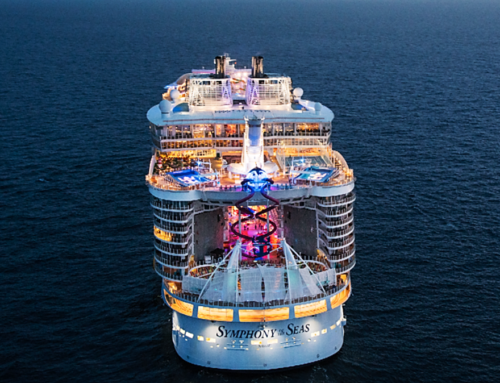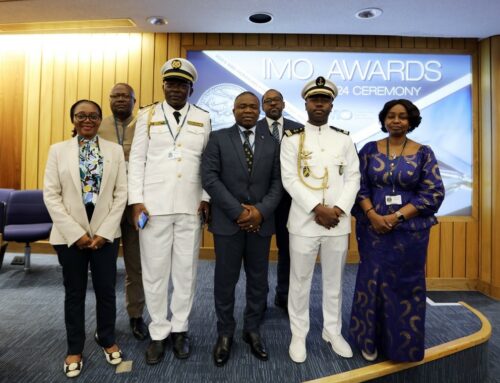The M/V DALI Disaster Update: What We’ve Learned So Far
 Nearly seven months ago, Maryland was shaken by disaster—a 900-ton cargo ship, the M/V DALI, collided into a key bridge, claiming the lives of six transportation workers and blocking a vital transportation route. In the aftermath, many are shocked and confused: how could something like this happen? Seven months later, while questions remain, investigations by federal and state agencies are beginning to determine what happened that tragic night.
Nearly seven months ago, Maryland was shaken by disaster—a 900-ton cargo ship, the M/V DALI, collided into a key bridge, claiming the lives of six transportation workers and blocking a vital transportation route. In the aftermath, many are shocked and confused: how could something like this happen? Seven months later, while questions remain, investigations by federal and state agencies are beginning to determine what happened that tragic night.
Three investigations are currently underway into the M/V DALI incident, with the Department of Justice (DOJ), the Maryland Attorney General Anthony Brown, and the National Transportation Safety Board (NTSB) conducting parallel inquiries. While the NTSB is not expected to release its full findings for several months, lawsuits filed by the DOJ and Maryland have shed light on critical failures aboard the vessel. These lawsuits have named Grace Ocean, the ship’s owner, and Synergy Marine, its manager, as primary defendants, accusing them of negligence which directly contributed to the disaster.
The allegations paint a damning picture of long-standing electrical and mechanical problems that were ignored in favor of reducing maintenance costs. Investigators have revealed that the M/V DALI experienced persistent electrical issues for months before the crash, with engineers and crew warning of excessive vibrations degrading key electrical equipment and causing cargo lashings to work loose. In fact, internal handover notes show that the previous captain reported these specific problems to Synergy Marine in the spring of 2023—almost a year before the collision.
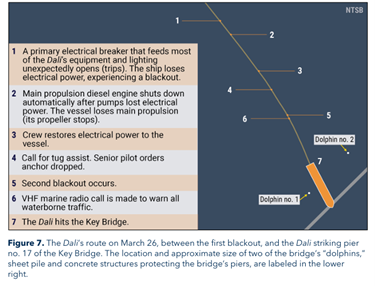 Negligence and Mismanagement
Negligence and Mismanagement
Benjamin Mizer, principal deputy associate attorney general for the DOJ, described a pattern of dangerous oversights that led to the collapse, calling out “negligence, mismanagement, and, at times, a desire to cut costs” as the causes.
On the night of March 26th, 2024, when the M/V DALI lost power, it triggered a cascade of failures. When a transformer malfunctioned, the ship should have automatically switched to its backup power system, ensuring it could still be steered. But according to investigators, this critical safety feature had been “recklessly disabled” by the crew, forcing engineers to waste valuable time manually resetting the system.
Even worse is the finding that when power was briefly restored, it failed again within minutes, likely due to the use of an inadequate temporary fuel pump—another cost-cutting measure. This left the crew with no time to steer the ship away from the bridge. Maryland Attorney General Anthony Brown said, “Because of the stunning mismanagement, disinterest, or incompetence of the owner and operator of the M/V DALI, those backup systems failed.”
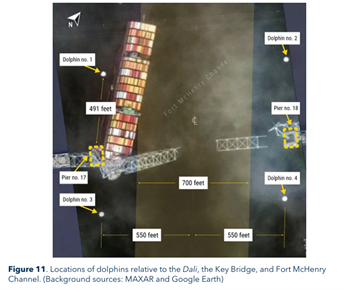 Moment of Impact
Moment of Impact
As the ship approached the bridge, there likely could have still a chance to avoid catastrophe. Experts have pointed out that dropping an anchor at this stage might have slowed the vessel enough to prevent the fatal collision. But this maneuver never happened. Investigators now allege that the crew was either improperly trained or too incompetent to act, with the ship’s anchors not readily available when needed.
One of the most significant failures came earlier that morning, when the captain of the M/V DALI failed to report any of these significant mechanical issues to the local pilot who boarded the ship. Federal regulations require captains to notify the Coast Guard and pilots of any power outages or mechanical failures, but this information was withheld. According to the NTSB, the pilot was told everything was in “good working order,” leaving authorities unaware of the imminent danger.
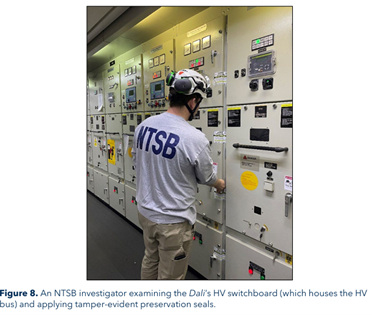 While the DOJ and Maryland are establishing a compelling case of negligence, we still are waiting for the NTSB’s full report, which is expected to take several more months. Early findings suggest that a loose cable found during an inspection contributed to the blackout that ultimately led to the crash, but the NTSB has not yet drawn any official conclusions.
While the DOJ and Maryland are establishing a compelling case of negligence, we still are waiting for the NTSB’s full report, which is expected to take several more months. Early findings suggest that a loose cable found during an inspection contributed to the blackout that ultimately led to the crash, but the NTSB has not yet drawn any official conclusions.
In the meantime, the lawsuits against Grace Ocean and Synergy Marine continue to evolve. With both state and federal authorities seeking accountability for the six lives lost, the M/V DALI disaster is quickly becoming a landmark case in maritime law. As we wait for further details, one thing is clear: this tragedy was preventable, and the systems in place to safeguard lives and infrastructure failed in the most devastating way possible.
Seven months later, the U.S. maritime industry is still grappling with the aftermath. However, thanks to the relentless work of investigators, we are getting closer to understanding how, and why, this catastrophe occurred. As we continue to mourn the loss of life, we also look forward to the changes and reforms that could prevent such a tragedy from happening again.
We at the Herd Law Firm are proud to fight for seamen, maritime workers and passengers in all types of personal injury and death claims. As maritime personal injury attorneys (and sailors ourselves!) located in northwest Houston, we never waver in our commitment to help these maritime workers, passengers, and their families when they are injured or mistreated.
10/23/2024
Photo Credit: NTSB.org








